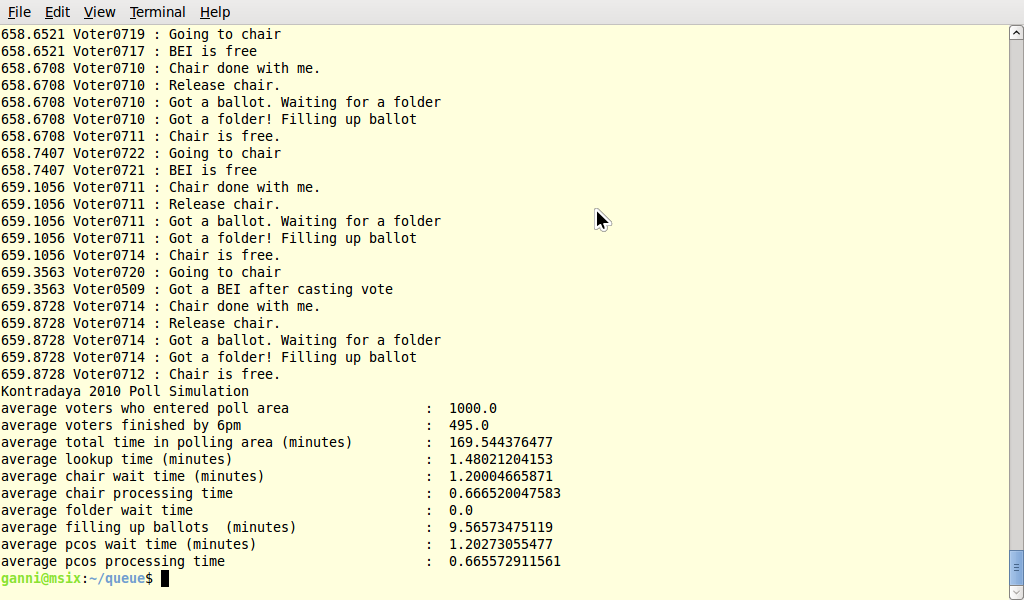Half of voters at every clustered precinct will not be able to vote in the May 10 polls due to insufficient time, effectively disenfranchising a number of voters come election day, a study conducted by a convener of multi-sectoral poll watchdog Kontra Daya (Anti-Fraud) showed. In an interview with GMANews.TV, Prof. Giovanni Tapang of the University of the Philippines’ National Institute of Physics said he had simulated the voting process using a programming language package called the Simulation in Python (SimPy). "We get results showing that more than half of the 1,000 voters lining up at the clustered precinct will not be able to finish by 6 p.m," Tapang said.

An image of the computer simulation showing that 11 hours will not be enough to accommodate 1,000 voters at each clustered precinct. — Photo courtesy of UP Prof. Giovanni Tapang
Voting on May 10, 2010 will begin at 7 a.m. and will end at 6 p.m., or a total of 11 hours. The Commission on Elections expects 50,723,734 voters to flock to 76,340 clustered precincts nationwide on May 10. Each clustered precinct will have one Precinct Count Optical Scan (PCOS) machine and three Board of Election Inspector members. One poll machine can supposedly accommodate about a thousand voters. On election day, Tapang said, a voter must find his name on the list of voters within 15 minutes and have his identity verified by election inspectors within two-and-a-half minutes. Anything longer than that would mean a backlog, he pointed out. "If he takes longer than this, chances are that the queue will pile up and not everyone will be able to vote," Tapang said.
Voting process He also said the chairman of the Board of Election Inspectors only has 40 seconds to check a voter’s name against the list and facilitate the voting. Filling out the ballot, he added, should not take more than 10 minutes, and feeding it into the PCOS machine should not take longer than 40 seconds. "If the whole procedure takes longer than that, the number of voters unable to vote… drastically increases," Tapang said. Based on his calculations, he said only 495 of the expected 1,000 voters will be able to vote. He also said at least 95 voters must arrive every hour to make sure the full number can be accommodated by 6 p.m. Tapang said the simulation did not take into account "untoward incidents." It also did not include bathroom and lunch breaks for election inspectors and any possible electronic problems. "Even if a voter moves fast, if the election inspector is the problem, then there will still be a long line," he said in Filipino.
Dependent on voters Comelec Commissioner Gregorio Larrazabal earlier said they had also conducted voting simulations, and that they had managed to pull it off, accommodating about 120 voters per hour. In one instance, they managed to helped about 400 voters before lunch. "The notion that you can’t process 1,000 voters in 11 hours doesn't make any sense," he said. Comelec Chairman Jose Melo, for his part, said the flow of the voting process would also depend on the voters. "My advice to the voters is go to polling places early and avoid last-minute voting," Melo said in Filipino. —
RSJ/LBG/NPA, GMANews.TV 





